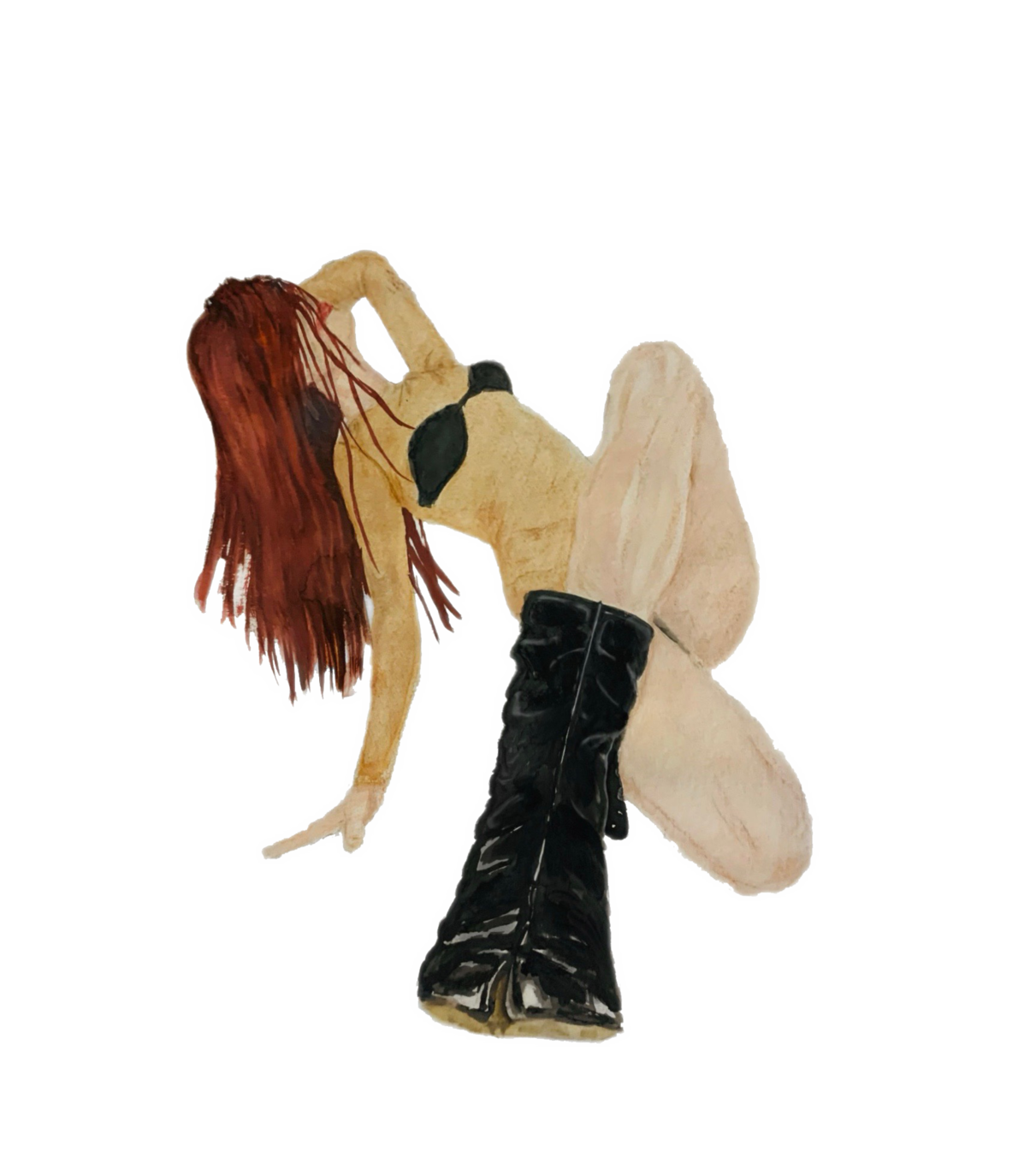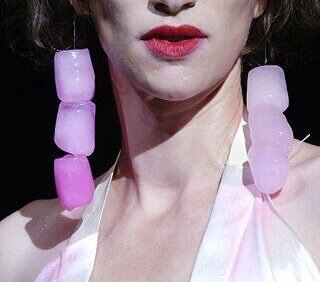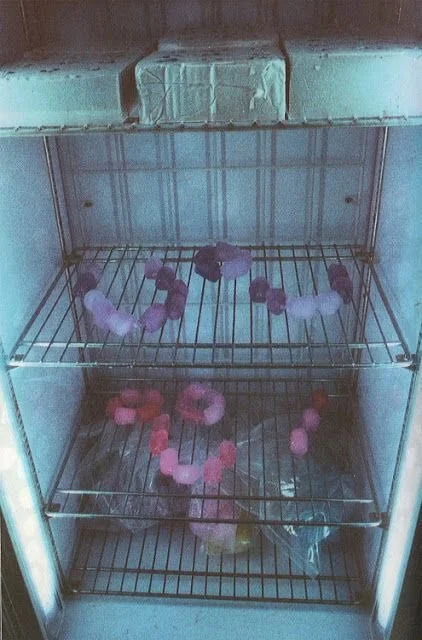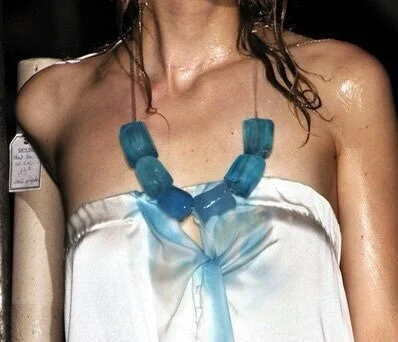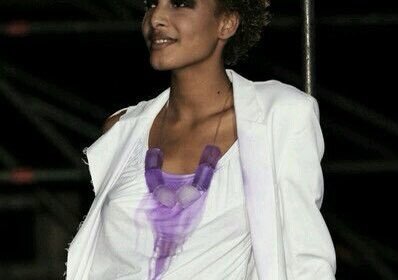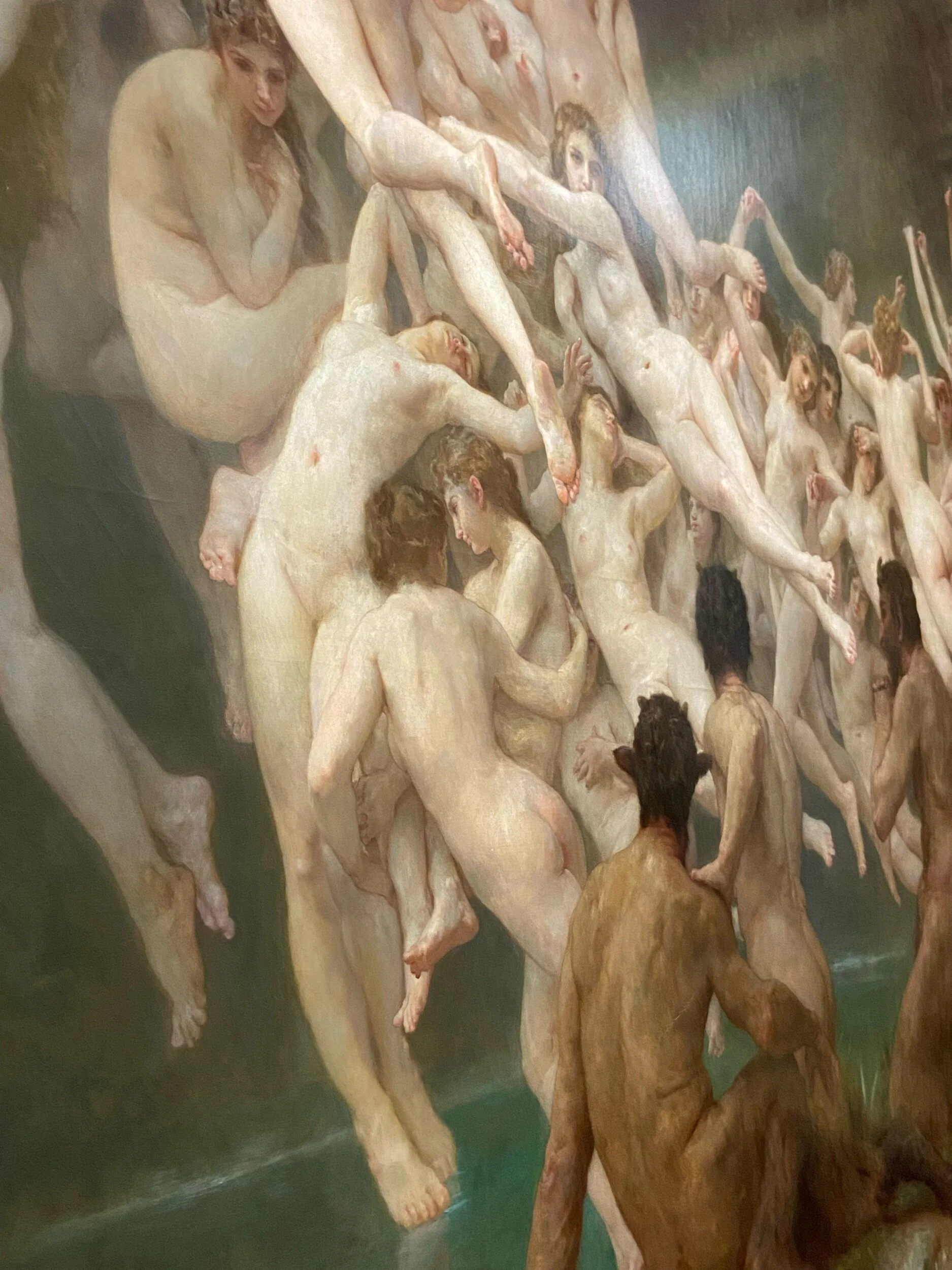5 references of the day
Maison Margiela spring 2006 Every outfit came with one side finished and the other melting off into raw fabric. A couple of dresses still had bolts of fabric attached. And then, to underline the theme, there was the extraordinary jewelry—necklaces and bracelets made of ice cubes, which, in the process of melting, marked the clothes with streaks of blue or magenta.
If all that sounds like a crazy intellectual essay on work in progress, don't be too put off. This was also a hot display of grittily glamorous womanhood, as exemplified by the strong-featured, grown-up yet languorous models Margiela had selected from street castings. As they shifted their slick bodies and shook their tousled hair, they radiated enough sexual heat to reduce any man to a pool of water at their feet. As for fashion content: In a season when the stock of pantsuits is steeply on the rise, Margiela’s masterful tailoring is some of the most sophisticated around.
I shot this Marine Serre show of ss2020 right before the pandemic hit: with models in masks and apocalyptic tendency it felt very predictive. Serre is part of a new wave of young designers who’ve taken matters into their own hands by quietly and intuitively embedding sustainable values into the seams of their clothes.
The title of her latest collection, Marée Noire, means oil spill in English, though the literal translation has an even more ominous ring to it: black tide. The show began at the toll of what sounded like a death knell with a series of slick all-black looks that included recycled plastic raincoats accessorized with reclaimed metal hardware belts, seashells hung on hoop earrings, and reusable water canister holders. Speaking before the show, Serre explained that the collection was conceived as the aftermath of an apocalypse in which only a handful of people have survived devastating climate wars and mass extinction. Though the designer rarely works in black, this season the funereal tones made perfect sense.
Les Oréades is an oil painting by the French artist William-Adolphe Bouguereau, painted in 1902. The Oreads is a mythological painting and it is one of Bouguereau's best-known works. The painting includes many nude females, a characteristic seen in many of Bouguereau's artworks. It is painted in a Neoclassical style which features mythological Roman and Greek nymphs and satyrs.[2]
The Oreads is named after the nymph of the mountains, the Oreads, also known as Orestiads. In Greek mythology, these creatures are led by the Greek Moon goddess of the hunt named Artemis, one of the most venerated ancient Greekdeities. In ancient Rome she was known as Diana. Artemis or Diana prefers to stay on the mountainside; that is the reason the Oreads are always her companion. Oreads are lively creatures who hunt wild animals such as boar and birds with their arrows. Under Diana's guidance, the Oreads line themselves behind her in a luminous form. The painting shows the Oreads ascending into the sky while three satyrs watch them, seemingly mystified at the sight.
On ‘Hell Shell’ Young Nudy raps about truth and honesty in gang life, and the consequences that come from betraying your ‘dawgs’ (gang).
A notable feature of the song is the ‘bouncing beat’ that can be felt when listening to the song with headphones on. The beat purposely ‘ricochets’ between the listener’s ears to explain the ‘Shell’ part of the song, where Nudy is intending his shotgun shells are ricocheting all over the place. This is done by stereo recording, which has two tracks on which you can record your music rather than one.
Pi'erre has done this by recording beats on the left track and the right track separately, so that in turn they will appear at the opposite sides of your headphones.
And it’s fire.
Nam June Paik, ‘Blue Buddha’, 1992–1996, mixed media, 250 x 15.5 x 20 cm. Installation view at Shanghai Himalayas Museum, “Dunhuang: Song of Living Beings”.
